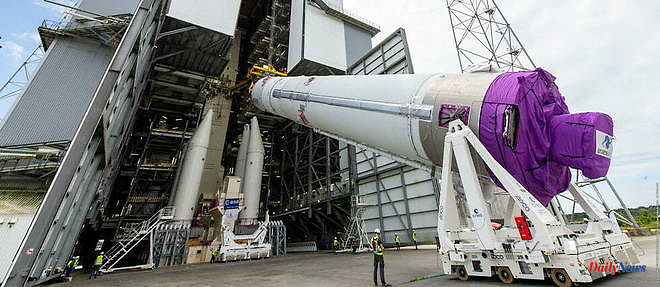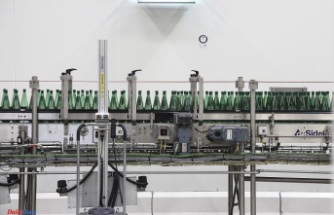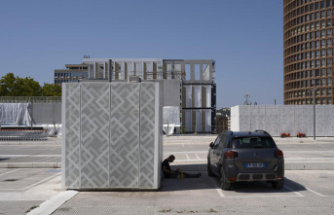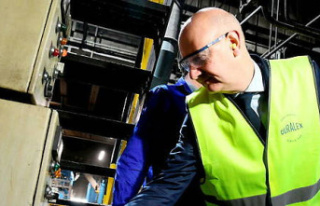When you see it on the ELA-4 launch pad, specifically built for it, at the Guiana Space Center in Kourou, this impressive 62-meter high rocket seems ready to take off. However, the maiden flight of Ariane 6 is not for now...
And the launcher here present will never take off, it is only a prototype, of which three of the four boosters are filled with water and one with inert propellant, to carry out the combined test phase in which the rocket.
"She's beautiful, huh," says Tony dos Santos, head of these tests at the ESA (European Space Agency), looking at the rocket with stars in his eyes. "In the test phase, we will shake up this model well so that the model of the first Ariane 6 flight takes the benefit of all the anomalies that we will have discovered and corrected during this key period. »
If this test phase should not be neglected, the project stakeholders seem very eager to see the rocket take off for the first time. Because on the future of this launcher rests the weight of European sovereignty in the space sector.
Where Ariane 6 was to replace its predecessor, as well as the Soyuz launchers, and ensure the transition, a period of dependence on other global players is looming. In particular vis-à-vis the American operator SpaceX, which shows iron health and multiplies launches.
The company is also carrying out, this Monday, April 17, a first test flight of Starship in its complete configuration, the largest rocket in the world, intended for trips to the Moon and Mars. Elon Musk, its boss, who called on Europe to build Ariane 6 to "resist it" can today rejoice in benefiting from the Old Continent's dependence on its launchers, since the European Space Agency had to call on Falcon 9 for its two Euclid and Hera probes, planned for 2023 and 2024.
"It's a real launcher crisis, recognizes Philippe Baptiste, CEO of Cnes (National Center for Space Studies). This situation is annoying, but Ariane 6 is coming! We are progressing and solving technical problems every day, one after another, the program is not at all planted and we are reaching the end of development. »
But, concretely, where are we on the side of Ariane 6? "We have finalized the combined tests of the mechanical part with the assembly of the various stages of the rocket, the verticalization of the central body and its installation on the launch table", explains Carine Leveau, director of space transport at Cnes.
“We are now entering the most technically difficult period: fluid testing. Here, the idea is to electrically and fluidically connect the launcher with the launch pad to achieve firing and ensure that they communicate and work well together,” she continues.
At the same time, the stages of the launcher for the inaugural flight are in full preparation, in Europe, near Les Mureaux and Lampoldshausen, in Germany, and "they should take the boat to cross the Atlantic after the summer of 2023".
"We had technical difficulties, in particular with the retraction dynamics of the cryogenic arms [great innovation of Ariane 6 which makes it possible to connect the launcher to the launch pad and to supply the tanks of the upper stage with liquid hydrogen and liquid oxygen, editor's note] which made us fall behind, but everything is done so that the rocket is placed in the launch zone at the end of the year, "says Carine Leveau, looking confident.
Its director is more vigilant: "If all goes well, the current schedule is theoretically possible, but you have to be careful: I don't want to give a date at the risk of going over it as a failure, he concludes. I'm confident, but a lot can still happen. »












